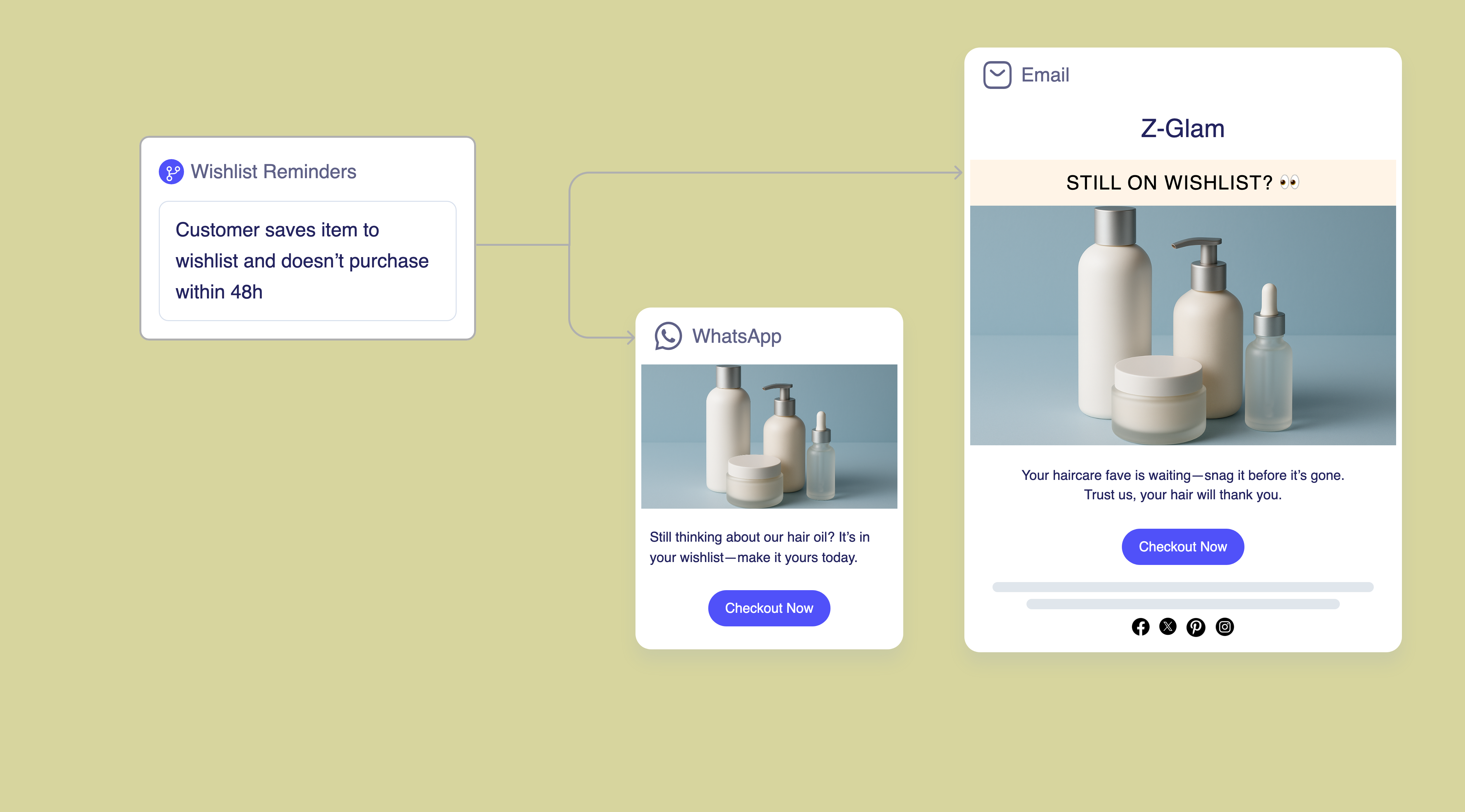
Wishlist Reminder
Convert high-intent users into buyers by reminding them about saved items with gentle nudges and incentives.

What are Wishlist Reminder Campaigns?
Wishlist Reminder campaigns target users who saved products to their wishlist but haven’t checked out yet. By reminding them within 24–48 hours, you tap into one of the strongest buying signals in eCommerce and bring customers back while intent is still fresh.
Why Wishlist Reminders Matter

Challenges

Opportunities
Outcomes
Higher Wishlist Conversion Rates
Increased Revenue from Qualified Leads
Better Customer Re-engagement
Who is it for?
Audience
Exclusions
How it Plays Out
A sample sequence for this use case.
Still dreaming of this? It's still waiting in your wishlist — ready when you are → [Buy Now]
Still thinking about [Product]? It's in your wishlist — grab it while it's in stock → [Buy Now]
Your wishlist items are waiting for you — don't let them slip away → [Complete Purchase]
Final reminder: Your saved favorites expire soon from wishlist → [Shop Now]
Best Practices
- Send initial reminders 48-72 hours after wishlist addition when interest is still fresh but needs gentle encouragement.
- Use soft, non-pushy language that acknowledges the customer's previous interest without being aggressive.
- Include light incentives like small discounts or free shipping to overcome purchase hesitation.
Wishlist Reminder Examples & Prompts
Channel Examples
Automate with Zenie Prompts
Tracking wishlist activity manually is time-consuming. Zenie makes it effortless.
Explore Similar eCommerce Marketing Strategies
FAQs
Why are wishlist reminders effective?
They target shoppers who have already shown clear interest by saving products. Since the intent is strong, even a simple reminder feels relevant and often converts better than broad promotional campaigns. Over time, this makes them one of the most efficient ways to turn browsers into buyers.
When should wishlist reminders be sent?
The ideal window is within 24–48 hours of saving an item. This is when interest is still high and the product is fresh in mind. If you wait too long, the chance of conversion drops and customers may look elsewhere.
Do you need to offer discounts in wishlist reminders?
Not always. Many shoppers buy with just a reminder. Discounts work well for higher-priced or seasonal items but should be used sparingly to protect margins. Think of them as an extra push, not the default approach.
How do you measure the success of wishlist campaigns?
Track how many wishlist items convert into purchases, the revenue uplift from these campaigns, and compare results against generic product recommendations to see the added value. A strong campaign will consistently lift both conversions and order value.
How is this different from cart abandonment campaigns?
Wishlist reminders engage at the consideration stage, while cart abandonment focuses on checkout drop-offs. Both capture intent, just at different stages of the buying journey, and together they form a complete recovery strategy.


